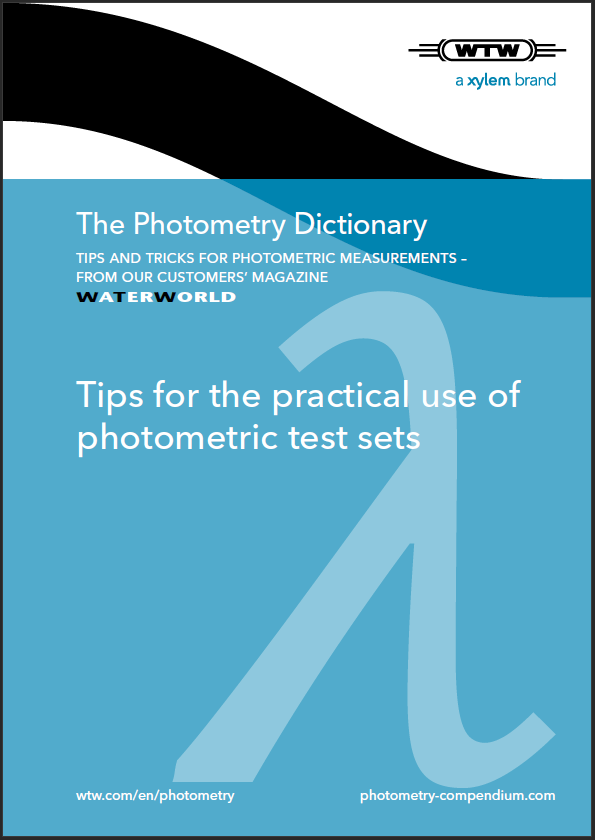WATERWORLD
Tips for the practical use of photometric test sets
You will frequently be faced with a measuring result and do not even need a plausibility check: The result appears com-pletely “off” – a totally incorrect measuring value! However, the cause is almost never the test set or the measuring device; more frequently the problem lies with the sample matrix and the unknown interference variables.
Read the package insert of the desired test!
The package inserts of the tests contain the required infor-mation about the permissible maximum limits of associ-ated ions in the sample. You will also find information about other (measuring) traps, such as an incorrect pH value of the sample. Package inserts can also be an impor-tant decision aid during the test preselection.
The most important facts in the package inserts:
- Reagent handling, e.g. dosing caps, quantities, replac-ing caps and dosing units
- Preparing the cuvettes: e.g. if tests are sensitive to tensides, cuvettes must not be washed with detergents
- Disturbing ions which mask the capture of the actual measuring parameters
- Measuring ranges that are achieved by different cuvette sizes
- Standstill times until the measurement
- Special notes about sample volumes, e.g. when using CombiChecks
And here is another advantage of the prior information: The package insert contains all additionally necessary aids: from pH paper to concentrated sulphuric acid p.A.
The mercury-free test sets 09772 and 09773 for the determination of COD
These test sets always sound tempting if you are to make an environmentally responsible choice. But unfortunately, the margin for suitable measurements is quite small here:
The most important interference factor when using the mercury-free test sets is the chloride content of the sample. Chloride is always captured in the measurement for COD: fourfold compared to a normal COD determina-tion such as with the test set C3/25 is not a rare occur-rence; there will be precipitation if there is a high level of chloride. The test set is therefore more or less unsuitable for standard wastewater, as salt content stemming from natural and “human“ sources is normal. Also important is the use of chloride-free COD standard solutions for plausi-bility checks: for example, the WTW standards KCSB 100 / 400. Did you know that dilution often contains COD? Depending on the region, drinking water or uncar-bonated mineral water is very suitable.
The mercury-free COD tests were developed for special applications in the far north of Europe where only minimal chloride contents are to be expected.
Galvanizing: Unknown interference factors – unde-tected error sources
Enormous problems occurred in a laboratory when deter-mining the cadmium value: Only after extensive trouble-shooting, beginning with the device, then the test set all the way to the procedure, it was found that the sample matrix was contaminated with an extremely high ammo-nium value. After vaporizing as ammonium to a value of < 100 mg/l, the measuring results became so good that they were even comparable to the results of the ICP (mass spectrometric analysis). Therefore: especially with more complex sample compositions, a more extensive analysis of the sample matrix is helpful before testing for certain individual parameters as a routine!
Here you can download the whole article as a PDF:
